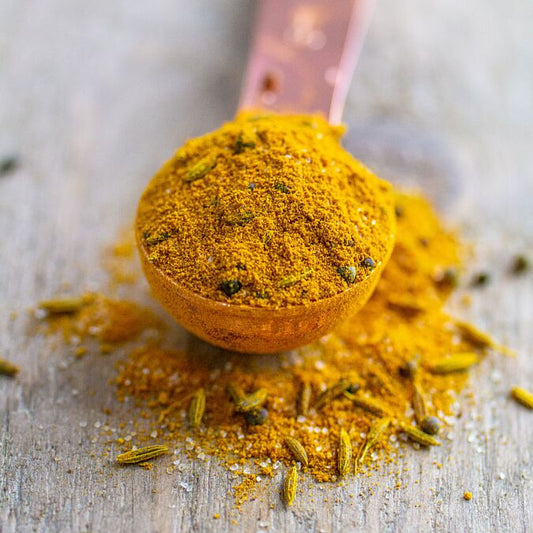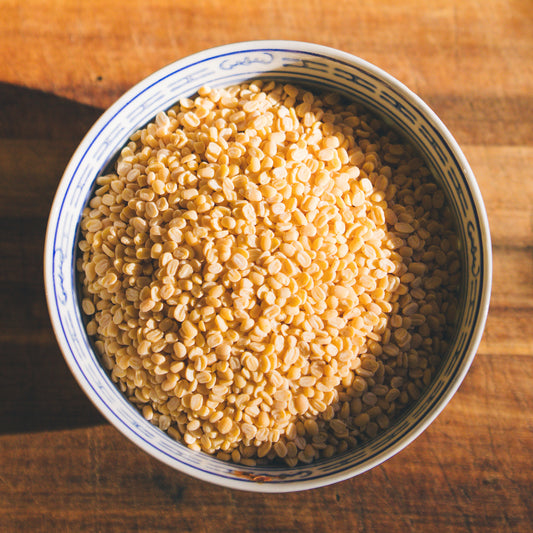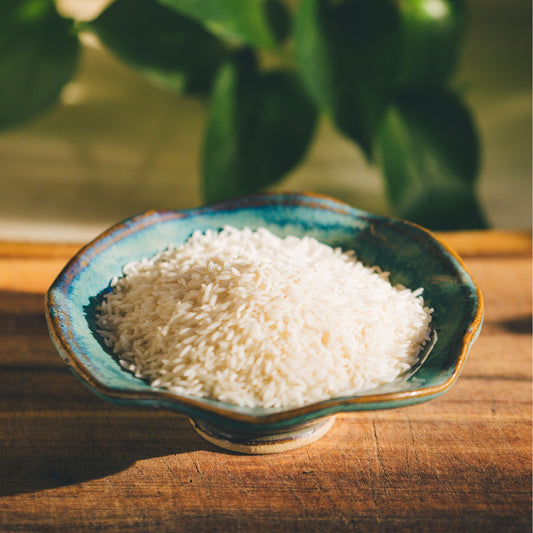Among the juice fasts, liver cleanses, and 10-day detoxes lives the traditional Ayurvedic kitchari cleanse. It's hard to know if there were dietary trends at the time of Ayurveda's origin over 5,000 years ago, but it's safe to say this cleanse has stood the test of time.
Its relevance, wholeness, and effectiveness tells us there's nothing trendy about it.
You might be called to an Ayurvedic cleanse for the same reasons other cleanses or detoxes beckon you. You desire more energy, you want better digestion, you dream of sleeping through the night, or you're simply in need of an overall reset.
Different than today's popular detoxes, Ayurveda's take on cleansing goes beyond the food to achieve the balance you seek. Focusing on the three doshas—vata, pitta, and kapha—the cleanse is intended to meet your unique needs.
If you're unsure where to begin, the Ayurvedic Dosha quiz will help you determine which dosha is currently out of balance in your system and where to focus your attention for the most beneficial cleanse.
What Is Ayurvedic Cleansing?
The traditional cleanse we practice in Ayurveda today is a more accessible version of what's called panchakarma, or PK.
PK is a very thorough method for clearing the body of ama, or the tangible and non-tangible buildup accumulated in our bodies and minds when we have not properly processed it. Using specific diet and bodywork, it's meant to wipe our inner slate clean so that our body is prepared to receive its medicine. PK is still performed in clinics around the world today, but it isn't meant to be done on your own or at home.
Though not quite as inclusive as the revered PK, the Ayurvedic cleanse we can do on our own has some of the same components and still serves its purpose to reboot and restore our system.
It consists of a mono-diet of kitchari, a dish made of mung beans, rice, and Ayurvedic spices that are easy to digest, absorb, and eliminate. Along with this special diet are recommended self-care practices, such as tongue cleaning, dry brushing, and abhyanga (oil massage).
An at-home cleanse requires minimal supplies, but does work better if you clear your calendar for the duration you choose, so you can fully commit to the journey with your mind, body, and heart.
How It Is Different and Why It Works
You're fully nourished.
While there are times when fasting is recommended, there is no skimping on food in this cleanse.
Three meals of kitchari each day ensures you won't go hungry, but also that you won't be overfull. Kitchari is considered to be the most nourishing dish one can consume, as the combination of mung beans and rice makes a complete protein and the spices come with a digestive guarantee.
All of this is important as it supports you in being physically and mentally energized throughout the cleansing process.
There's an equal emphasis on preparation, cleansing, and rejuvenation.
This isn't the type of cleanse where you binge on the foods you'll be eliminating before you begin and immediately eat French fries once you have completed. Instead, like all things Ayurveda, there is a gentle entry.
The cleanse happens in three phases:
- First, there is a slow elimination of processed food, alcohol, caffeine, and pretty much anything except mung beans, rice, and veggies. This helps to prepare your body for eating only kitchari.
- Then, there is the active phase of cleansing consisting of the kitchari diet and designated self-care practices.
- Finally, there is a rejuvenation period. This phase is key—once you have eliminated ama and revamped your digestion, your body is ready to absorb what you consume. It's important to choose a diet and herbal supplements that will help to address any tissues, or dhatus, that need rebuilding.

Oh, the oil!
If you have any experience with Ayurveda at all, you know that oil is usually the answer for any ailment.
In the active phase, you partake in external oleation by doing Nasya Oil, Ear Oil, and abhyanga before showering and, when appropriate, internal oleation by drinking ghee first thing in the morning.
Ghee is consumed in increasing amounts to act as a vehicle (or in this case, gheehicle) for loosening and removing ama, while the external oiling helps to both circulate lymph and nourish tissues. Other options for internal oiling during a cleanse include castor oil and oil enemas. For all internal oleation, it's important to work with a qualified practitioner.
Digestion is the focus—and not just physical digestion.
Ayurveda teaches that most of our illnesses begin with digestion, but proper processing of food isn't all we need to digest for vitality and health.
Thus, an Ayurvedic cleanse isn't only body focused, but also encourages us to take time to work through past and current emotions, thoughts, and experiences.
True, the kitchari is a big component due to its digestibility, but you'll find a mono-diet can also free up headspace. And when we have the freedom to navigate our mind, we often realize that our well-being depends on things beyond the macronutrients.
In fact, you can even take your Ayurvedic cleanse further and focus on mental and emotional cleansing.
As with all cleanses, listen to what your body is telling you. Observe and adjust as needed, and emerge feeling a renewed sense of vibrancy and connectedness with your whole self.














